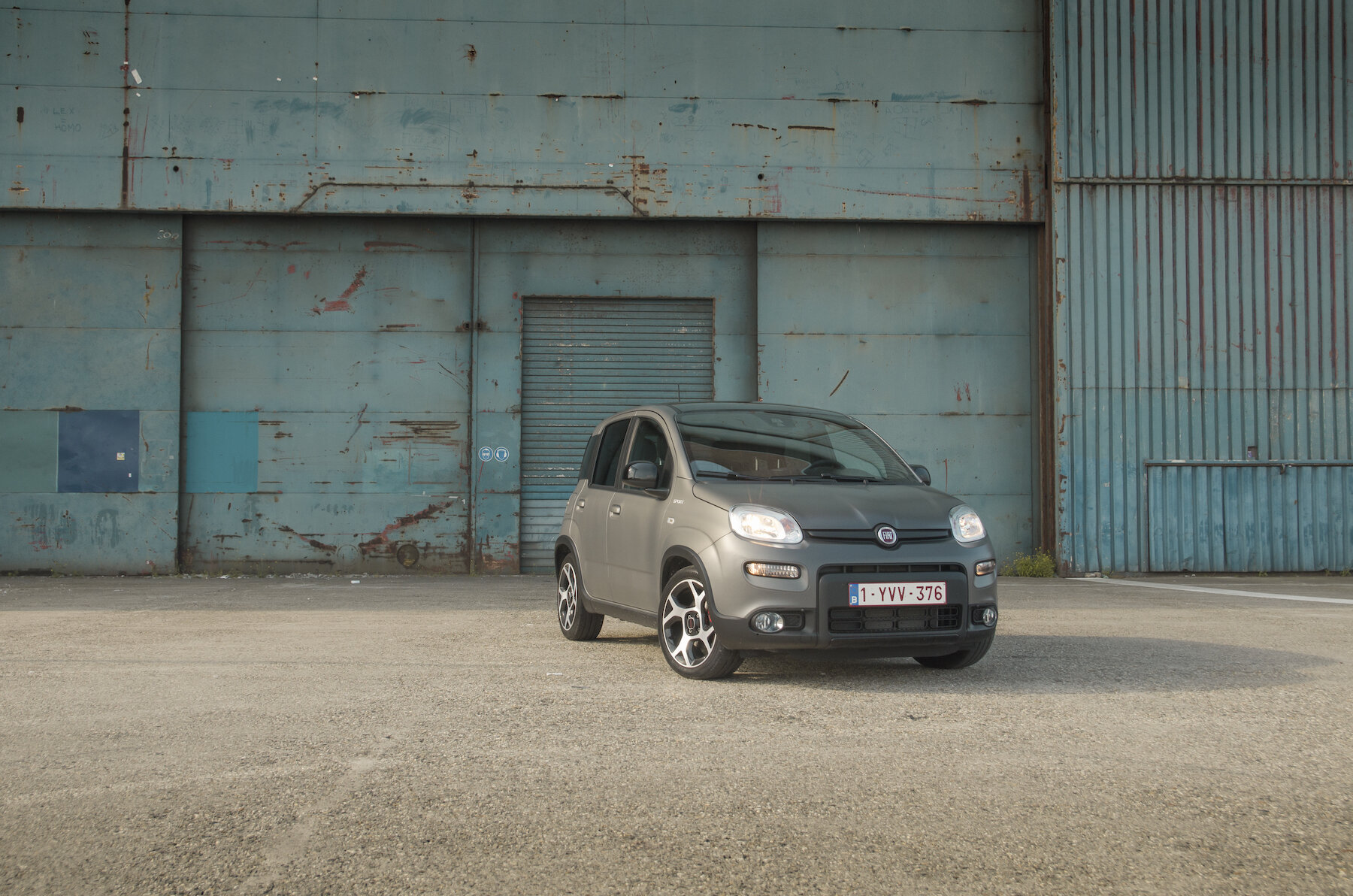Fiat Panda Sport | All Show But No Go?
If there could be only one manufacturer that produces little cars, it has to be Fiat. The name ‘Fiat’ is inherent to successful little cars. But why is the brand so successful at this? It seems so easy, developing a tiny car. Yet, it simply isn't. In fact, facing the challenges that rise when the market demands a tiny car that does everything, you have to come up with some very clever engineering and creative solutions to really make it work.
Third generation Panda
Don’t you worry, this is not a history lesson. But back in 1980 Fiat launched the brilliant Fiat Panda that, indeed, did everything. The successful Panda-formula was extrapolated to 2021, where we encounter the first hybrid Panda.
We were in for a shock when we found out that this generation of the Fiat Panda already lasts a decade. You read that right; this third generation Panda is 10 years old. This can both be a good and a bad thing: it’s a design that is timeless again or its design was ahead of its time in the first place. First, let me talk you through the current range of Pandas that Fiat now offers. This generation of Pandas is available in three flavors: the Panda Cross, Panda Sport and Panda Life. Both the Sport and Life are propelled via the same 1.0 FireFly mild hybrid petrol engine. The 4x4 version offers another engine option in the form of a more powerful 2-cylinder TwinAir engine.
All show but no go
The Panda we’ve had on test is a Fiat Panda Sport. Since we’re looking back at the history of the Panda earlier on, it would be harsh to overlook the sporty version of the previous Panda: the Panda 100 hp. Whereas that car actually had some work done to it (in the form of a 1.4 liter engine, stiffer suspension and bigger brakes), the current Panda Sport limits its sportiness to nothing more than a trim level. Unlike most people do, I don’t want to mock Fiat’s decision of discontinuing this niche car. So this review will not focus on the lack of sportiness of the Panda Sport.
The Sport trim level offers a new choice of 16-inch alloy wheels that are complemented by the colored brake calipers. Also, the matte finish of the car is included in the new Sport program. On the inside, the Sport trim level continues with the presence of eco-leather, red stitching and a black ceiling. Sadly, the red stitching is only present in the front of the car. Back seat passenger must settle for a more basic trim level.
Practicality
The clever engineering that I mentioned earlier is notable in the interior of the Panda. Compared to the outer dimensions, the inside is quite spacious. Even the seats in the back are decent and genuinely usable, which isn't always the case in this segment. The car feels well put together but doesn’t immediately arouse an indestructible feeling. A wide variety of plastics is used, combined with 2021-proof vegan materials. The design elements from the exterior translate well into the interior where rounded squares are the main theme
The Panda is very easy to operate as the physical buttons are big and square, and fit the boxy-theme of the car. Alongside this the controls are just where you expect everything to be. There's a new 7 inch central screen that is operated via touch controls and also supports Apple Carplay, and Android Auto.
Driving the Panda
The naturally aspirated 3-cylinder is assisted by a 3.6 kW electric starter-generator. This starter-generator is positioned in an interesting setup that Fiat calls the BSG system. BSG stands for belt-integrated starter-generator, which indicates that the recovered energy is transferred via a belt to the generator. The electric energy is then stored temporarily in a tiny 11 Ah battery. For a reference, this is only slightly larger than your MacBook’s battery. The system operates as a mild hybrid, so there is no need for charging it at a charging point. When you decelerate from 80 kph to a standstill, the SOC of the battery is increased by approximately 30 or 40 percent, vouching the small capacity of the battery. Transferring this energy via a belt doesn’t immediately sound very efficient, but it helps in packaging. Fiat claims a CO2 reduction of 30% with the integration of the hybrid technology.
Apart from the SOC that is shown in the gauge cluster, the driver won’t notice anything from the addition of the mild hybrid technology. The Panda can’t drive on electric juice solely.
As you would have imagined by now, the Panda isn’t exactly quick. A 0-62 time of 13.9 seconds leaves a lot to be desired. However, the light weight of just over a thousand kilograms, and skinny tyres make it quite entertaining. Don’t push it too hard, because the soft suspension allows for a lot of body roll. And when you do push it, the connection to the road becomes rather vague.
Concluding
To end this review, I’d like to recur to the beginning of this article. Was Fiat able to carry through their dexterity in producing tiny cars that do everything? Although this car feels not very expensive – and in fact ís not very expensive – don’t forget that this money buys you a well put together mild hybrid with an integrated infotainment system with Apple Carplay, six speed gearbox, steering wheel controls and heated seats, all cleverly packaged in this tiny Panda. A Panda that has served the masses for over forty years now, albeit in different generations. So, without doing a forced attempt to relive their successful history, they managed to produce a totally different car in the same design ethos, affirming Fiat still is king of the hill when it comes to little cars.















